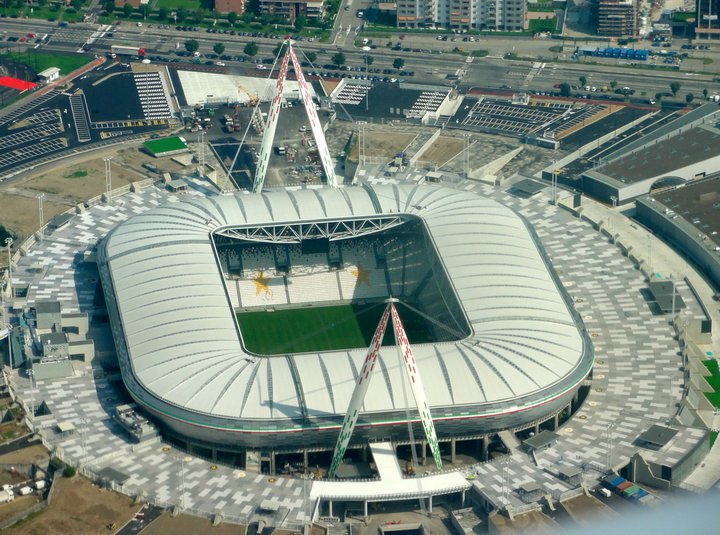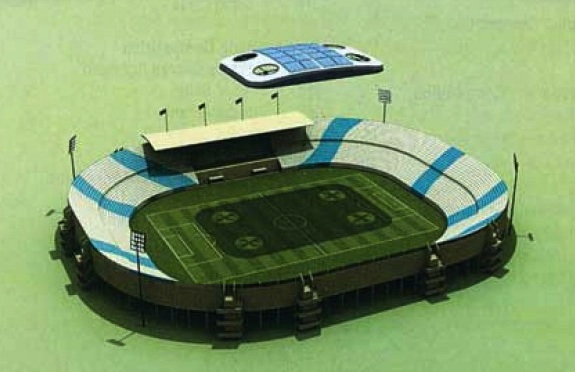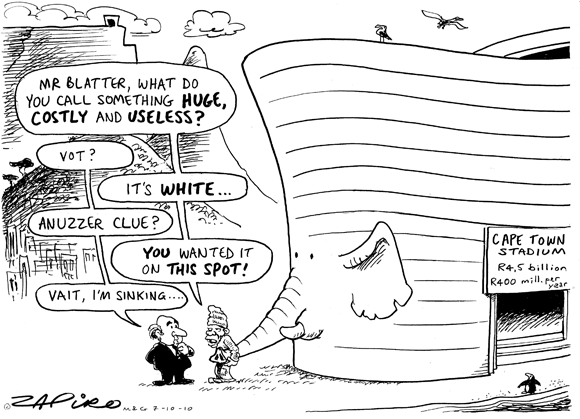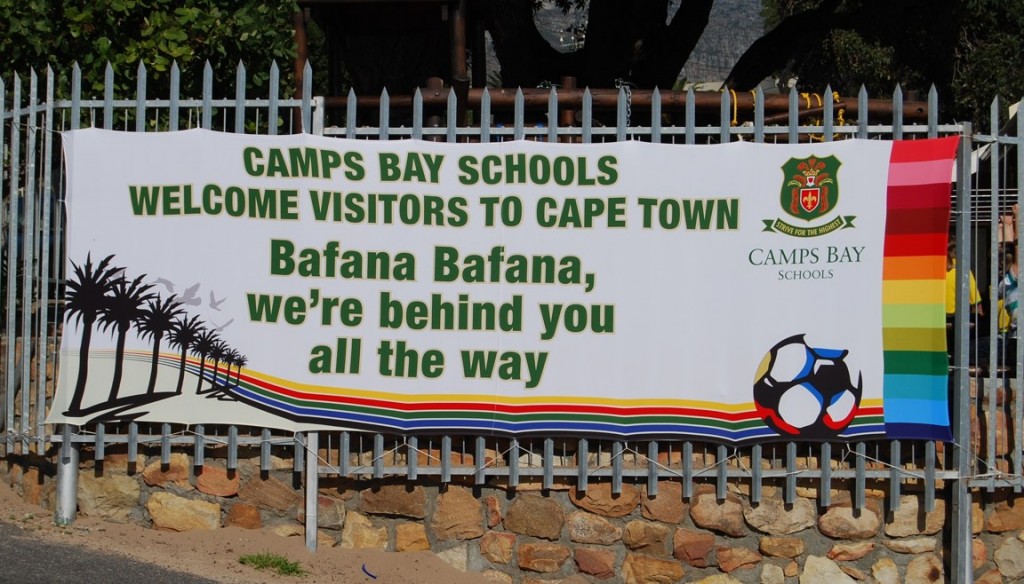
Although I was born and raised in Rome, I support Juve. My choice was based on the need to find a club that could compete with AC Milan and Inter, my older brothers’ favorite teams. I was barely six years old when I first saw Juve play. It was in Perugia (my father’s team) and “we” somehow lost 0-1 thanks to a goal by Renato Curi. As a result, Torino won the scudetto. What a tragedy! But the real tragedy happened a year later when I returned to Perugia hoping for a better Juve performance: Curi collapsed on the pitch and died of a heart attack. Talk about putting things in perspective.
Over the next decade, I watched Juve “under cover” at the Olimpico against Roma and Lazio, and in other cities as well. It could be dangerous. At Marassi stadium, for instance, Genoa’s ultras invaded our curva (end) wielding broken bottles. When all was said and done, a guy two rows in front of me was oozing blood from a stab wound in his leg. Surely it would have been safer in Turin, but as a young teenager living more than 400 miles away it was tough to make the pilgrimage to the Stadio Comunale. And after I moved to the United States in the mid-1980s, it seemed as if I had been sentenced to never attend a Juve “home” match. A victim of contrappasso for my act of betrayal of Roma and Lazio?
The inauguration of Juve’s new stadium is inspiring me to finally make the journey to Turin.
September 8, 2011, heralds the arrival of a new era in Italian football, or calcio as we call it. Juve’s friendly against Notts County — the club responsible for the Old Lady’s adoption of black-and-white kits — marks the first time an Italian club will play in its privately owned stadium.
It is a welcoming football-specific stadium: no track, no moat, no fence. It has a capacity of 41,000 seats and a design similar to many English Premier League grounds. Juve’s stadium provides a long-awaited alternative to overpriced, under-serviced, militarized, and outdated grounds found all over the peninsula. It rises on the ashes of its cursed predecessor, the Delle Alpi. Built on the outskirts of Turin for the 1990 World Cup, Delle Alpi stadium was twice as expensive as originally planned, featured terrible sight lines (largely due to a never-used running track), a bumpy playing surface, and abominably high maintenance costs. In 2003 Juve took it over from the city under a 99-year lease and demolition started in 2008. In the meantime, both Juve and Torino relocated to the downsized ex-Comunale stadium, renamed Olimpico after hosting the inaugural and closing ceremonies for the 2006 Winter Olympics.
Looking at the calendar, I could make the Piedmont derby between Juve and Novara on December 18 . . .
For a virtual tour of the new stadium click here. For videos documenting the construction process go here, here, here, here, here, here, and here.
Tag: stadiums
Artificial Clouds for Qatar 2022

Saud Abdul Ghani, head of the Mechanical Engineering department at the University of Qatar, recently unveiled a special plan for the 2022 World Cup: remote-controlled artificial clouds over the stadiums!
Powered by four solar engines, the man-made clouds would be made of ultra light carbon fiber in an attempt to bring some relief to fans in the stands and players on the field from temperatures expected to reach 122 degrees Fahrenheit (50 Celsius) during the Qatari summer. The cost of this Addams family trick? $500,000.

The stadium operator SAIL STADEFRANCE announced yesterday that it is pulling out of the 30-year lease agreement with the City of Cape Town to manage the 4.5 billion rand ($600 million) World Cup stadium at Green Point.
SAIL chairman Morne du Plessis explained that “Shareholders were not prepared to enter the lease under circumstances that projected substantial losses.” Since PSL matches in Cape Town rarely draw more than a few thousand spectators, and rugby already has an excellent stadium at Newlands, local taxpayers must now shoulder the World Cup debt burden long into the future.
For further reading, see my academic journal articles from 2007 and 2008 (free download), in which I argued that in the long run the monumental Cape Town Stadium — built at FIFA’s insistence — would not benefit South African football, but instead would privatize profits (construction companies anyone?) and socialize debt.
Worldview: SA 2010 (radio)

Did an interview on the ‘Worldview’ program of Chicago Public Radio station WBEZ. Interviewers Euan Hauge and Dan Shalin asked me what’s happening in SA at the moment? What are people talking about? Is the 2010 World Cup a case of the rich getting richer? What about forced removals disguised as urban renewal and the Nelspruit stadium mess? Is this really Africa’s World Cup? How will the African teams do in the tournament?
Listen to the interview here: http://audio.wbez.org/wv/2010/06/wv_20100604.mp3
Radio Debate: Africa’s First World Cup
Radio France International‘s Brent Gregston invited me to discuss Africa’s First World Cup on his ‘Crossrads Debate’ program. ‘Billions of people will see the football World Cup played out in glittering new stadiums built by the rainbow nation of South Africa. But few black Africans can afford to book a seat. Will the continent’s first World Cup be a unifying force in Africa? And how much does the feel-good factor depend on the performance of South African footballers?’
Click here to listen to the program.
Who will benefit from 2010?
Just as the football at the 2010 World Cup will be great, someone will make lots of money. It is not going to be local businesses for sure. This excellent 13 minute short documentary (“Trademark 2010″) for Dutch TV channel, VPRO, covers the fantasy that local people–small businesspeople, informal traders–will make money or get jobs during the tournament.
From Reuters:
CAPE TOWN, Sept 17 (Reuters) – South Africa faces a funding shortfall of 2.3 billion rand ($315 million) for six new stadiums built for next year’s Soccer World Cup, Finance Minister Pravin Gordhan said on Thursday.
South Africa, in its first recession in 17 years, is the first African country to host the world’s most watched sports spectacle, starting next June.
“National Treasury has informed me of the projected shortfalls for the 2010 FIFA World Cup stadiums. The total shortfall on the six new stadiums is 2.33 billion rand as of July 2009,” Gordhan said in a written response to a question in parliament.
The funding shortfall comes on the back of accommodation, transport and security concerns raised by FIFA, soccer’s world governing body.
Gordhan said contractual responsibility rested with South Africa’s 10 host cities to deal with rising costs, and it would be “clearly unreasonable” for national government to take full responsibility for reimbursement of rising costs. “Only one of the new stadiums is likely to be completed within budget,” he said, without specifying which stadium. Soccer City, where the finals will be played in Johannesburg, accounted for almost half of the total shortfall at 1.26 billion rand, he said.